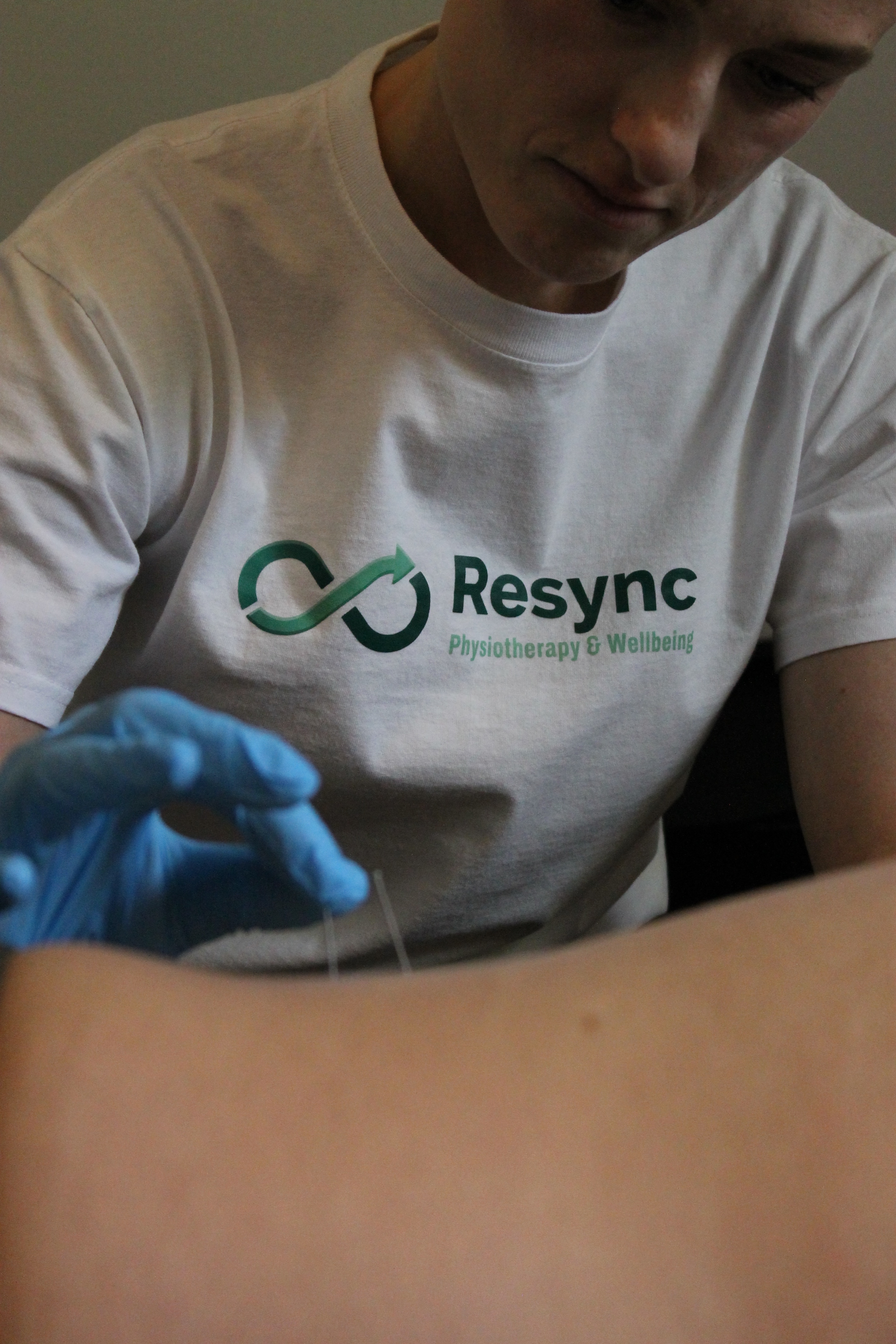Patella Tendonitis: Why It Happens and How to Recover
If you’ve ever felt a sharp pain just below your kneecap during sport, running, or even climbing stairs, you might have experienced patella tendonitis — also known as “jumper’s knee.” It’s a frustrating condition that can stop you from training properly, make everyday activities uncomfortable, and keep coming back if not managed well.
At Resync, we know how important it is to get back to the activities you love. That’s why we use The Resync Method — a staged and progressive approach that doesn’t just ease pain, but helps you rebuild strength, resilience, and confidence in your knee.
Why Patella Tendonitis Happens
The patella tendon connects your kneecap to your shinbone. When this tendon becomes irritated, often due to repetitive loading (think jumping, sprinting, or sudden changes of direction), pain and stiffness can develop. Common contributors include:
- Overuse from sport or training
- Sudden increases in activity or load
- Muscle imbalances around the hips, thighs, and calves
- Poor movement mechanics during running or jumping
- Weakness in the quadriceps or glutes
- Reduced flexibility in the hamstrings or calves
Left untreated, patella tendonitis can become persistent (sometimes called “tendinopathy”), making recovery longer and more complex.
What Helps: Evidence-Based Strategies
Managing patella tendonitis isn’t about stopping activity completely — it’s about the right balance of rest, progressive loading, and rehabilitation. Here’s what the evidence (and our experience) shows works best:
Load Management
Completely resting the knee usually doesn’t solve the problem. Instead, adjusting your training load is key. That might mean reducing impact activities, changing your training schedule, or modifying exercises until the tendon calms down.
Strengthening Exercises
Progressive strengthening, especially eccentric exercises (slowly lowering movements like decline squats), is one of the most effective treatments for patella tendonitis. These exercises help the tendon adapt to load and build resilience over time.
Hands-On Physiotherapy
Manual therapy, soft tissue release, and joint mobilisation can help reduce pain and improve movement, especially in the early stages of rehab.
Supporting Treatments
Adjuncts like acupuncture, taping, or shockwave therapy (if appropriate) may provide pain relief and support recovery, but they work best when combined with a structured exercise plan.
The Bigger Picture
Addressing underlying factors — such as hip strength, ankle mobility, training technique, or footwear — ensures the problem doesn’t keep coming back.
How Long Does Recovery Take?
With the right approach, many people see progress within a few weeks. However, full recovery often takes 8–12 weeks, as tendons adapt slowly. The key is consistency — sticking with your rehab programme and progressing at the right pace.




